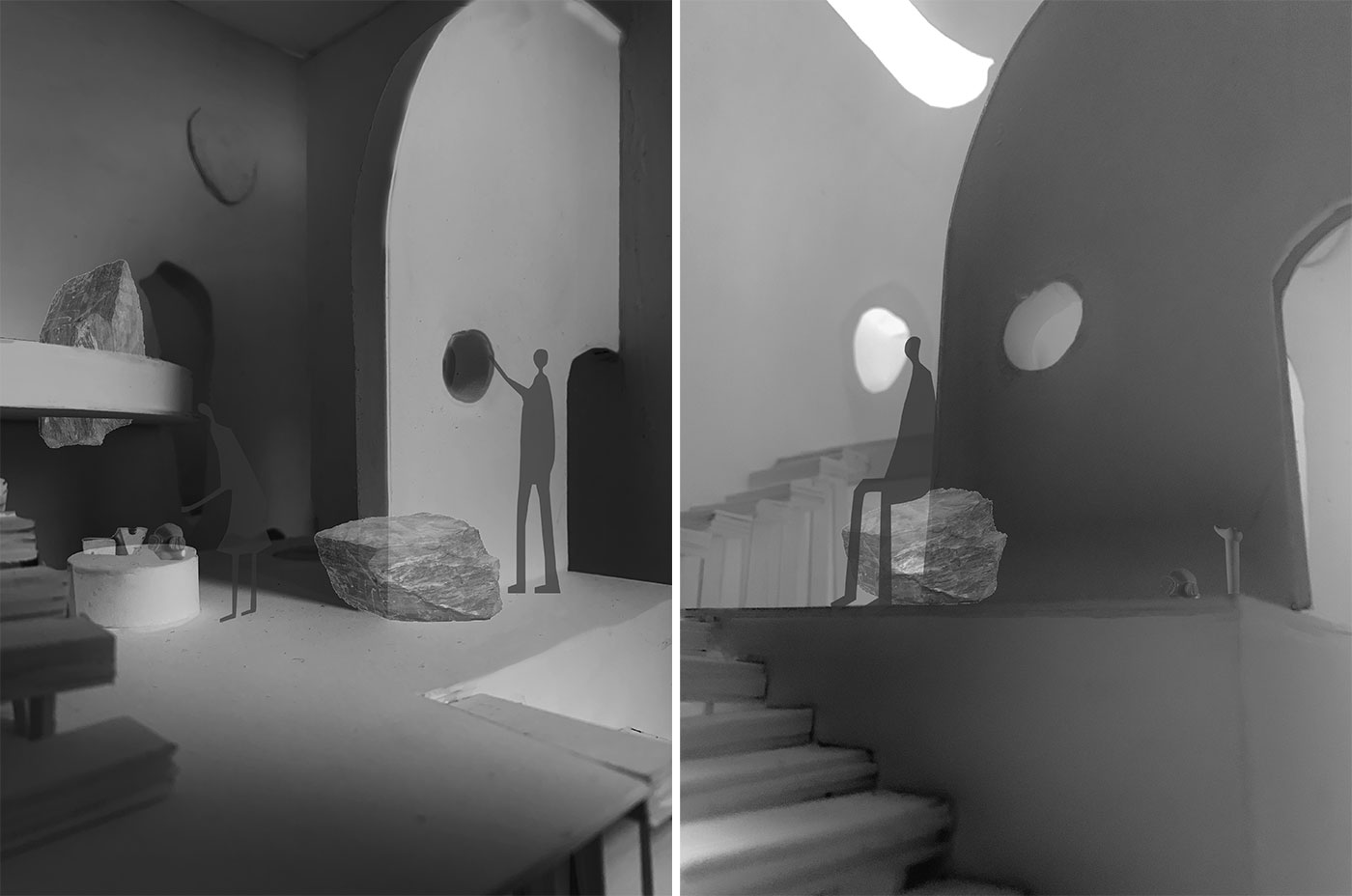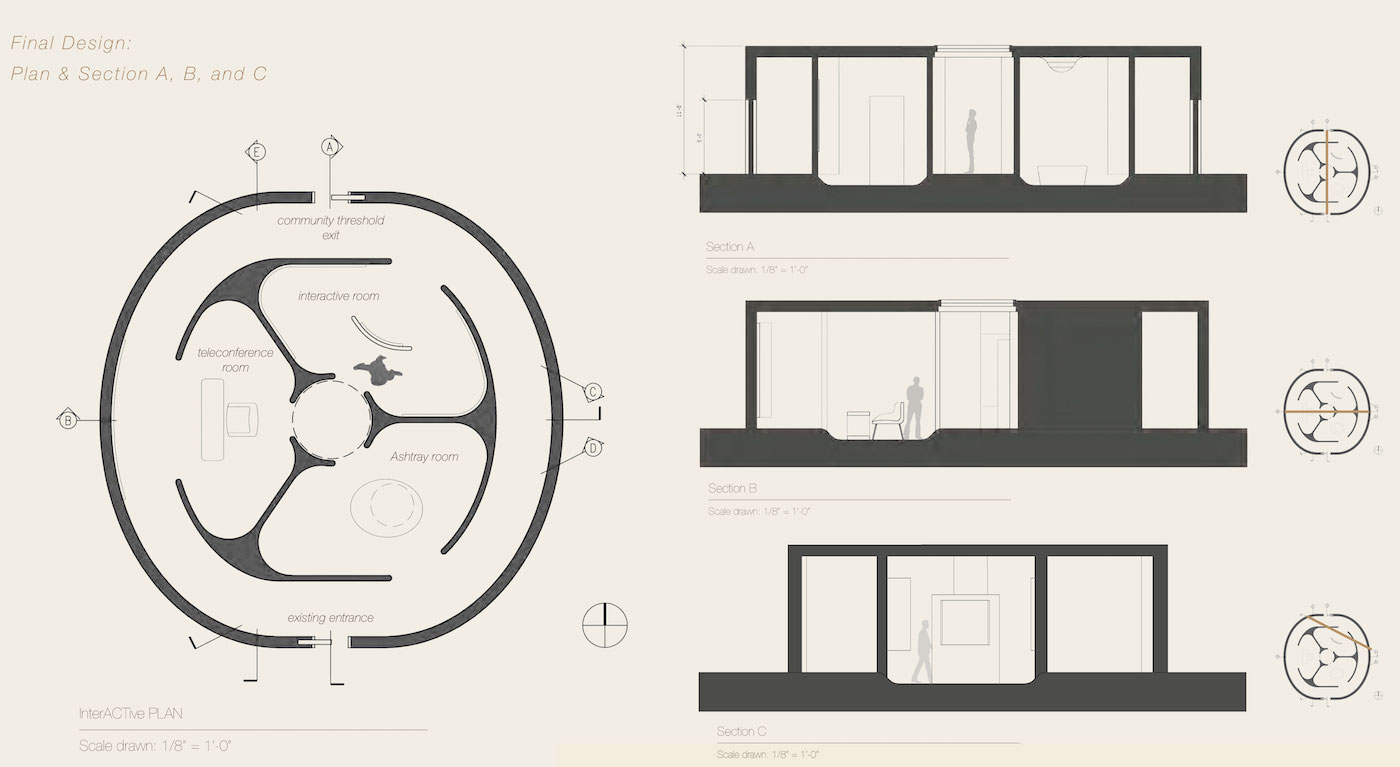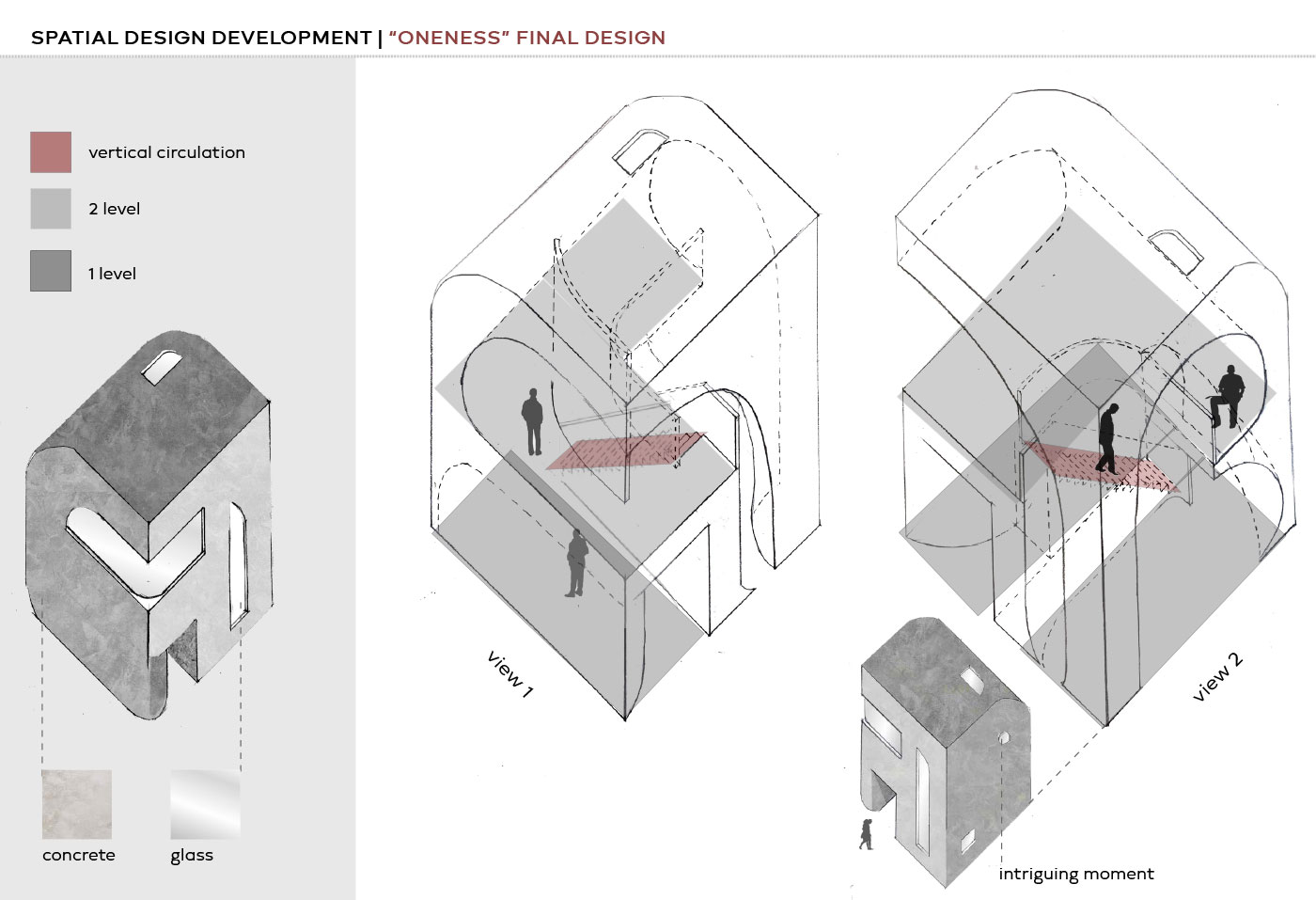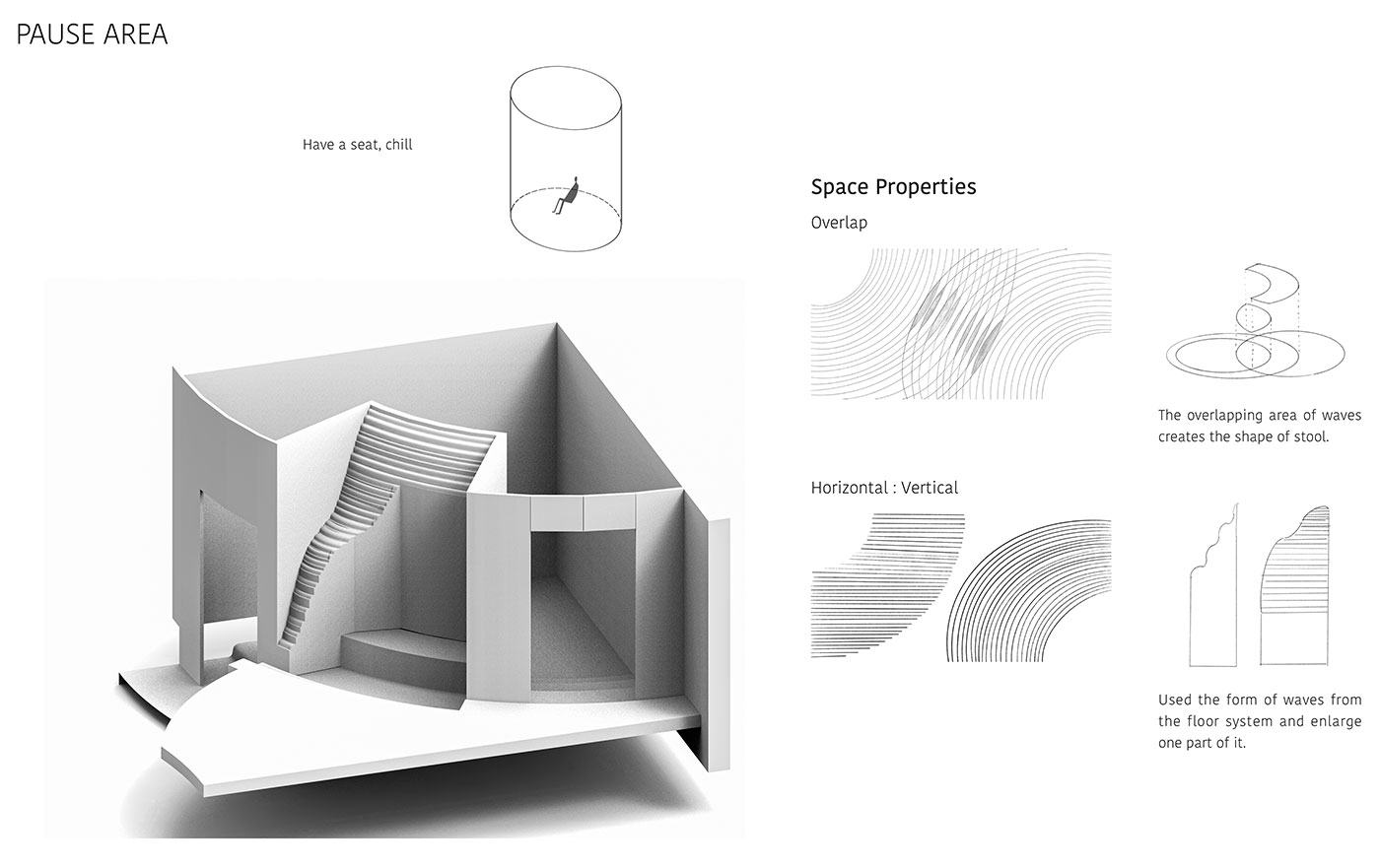How to view art when the usual experience of visiting a museum is impossible is a question that institutions are now confronted with around the globe. Pratt Institute interior design students in the MFA Graduate Foundations Design Studio course were working on hypothetical proposals for a Dumbo, Brooklyn, annex of the Noguchi Museum in Queens when COVID-19 disrupted their spring semester.

“Subtracted Landscapes” viewing room by Omar Aqeel, MFA Interior Design ’23 (courtesy Omar Aqeel)
How to view art when the usual experience of visiting a museum is impossible is a question that institutions are now confronted with around the globe. Pratt Institute interior design students in the MFA Graduate Foundations Design Studio course were working on hypothetical proposals for a Dumbo, Brooklyn, annex of the Noguchi Museum in Queens when COVID-19 disrupted their spring semester. As their studies shifted to remote learning, the focus of their projects changed to reflect on and adapt to a world of physical distancing and allow the students to examine how to create a viewing space for Isamu Noguchi’s art within these new limitations.
Sheryl Kasak, adjunct associate professor-CCE of Interior Design, and Tetsu Ohara, adjunct associate professor of Interior Design, each led a section of the course. As Ohara explained, the experience challenged students to work beyond model making—usually a major focus of the class—with virtual tools and resources. “Typically those sketch models drive students to explore the formal language and its environment, such as movements of daylight and material over time,” he said. “Because of this, we explored more ideas of experiential quality, including how do we learn about and relate to an artist from a distance, and how designs can align with the artist while also catering to human wellness.”
The results range from viewing rooms for one person to spaces that use digital media for remote access, all inspired by students analyzing work by the late Japanese-American sculptor, designer, and landscape architect. Selected student presentations of these projects are now on the Noguchi Museum website through June 30. This is the sixth annual collaboration between graduate interior design students and the Noguchi Museum.

“InteraACTive” viewing room by Young Ji Byun, MFA Interior Design ’23 (courtesy Young Ji Byun)
One project complements The Sculptor and the Ashtray, an exhibition that opened at the museum right before the pandemic and highlights how Noguchi used his midcentury designs to transform everyday objects into art. Young Ji Byun, MFA Interior Design ’23, proposed a single-user viewing room influenced by Noguchi’s biomorphic ashtrays. Considering how these objects brought ritual to an everyday activity, the “InteraACTive” viewing room turns witnessing art into a progression of intimate moments, including a place for physical objects, an interactive screen, and a teleconference conversation with an educational guide, all contained within fluid rooms channeling the curved shapes of the ashtrays.
“The design proposal was created focusing on how each individual can explore virtual viewing in different ways—whether it is an interactive virtual exploration or visual-focused remote viewing,” Byun said. “I’ve learned that even during this unprecedented time, creativity is still prominently present and we are constantly evolving and adapting to new challenges.”
As students made this shift in their learning, they experimented with new tools, such as 3D digital interfaces for modeling. Kasak said that although this “propelled many of the students into the digital realm a bit ahead of schedule” according to the usual curriculum, it “allowed them to take risks and investigate how to navigate new software that they had never been exposed to before,” especially as the students were just coming into the MFA program, some with undergraduate degrees unrelated to design.
“I wanted the students to see how we are able to adapt to circumstances that arise and that are out of our control and be not only successful but actually able to thrive,” Kasak added.

“ONENESS | sculptured space” viewing room by Yauheniya Pryshchepnaya, MFA Interior Design ’23 (courtesy Yauheniya Pryshchepnaya)
Yauheniya Pryshchepnaya, MFA Interior Design ’23, drew on the Composition for Arrivals Building, Idlewild Airport exhibition that revisits Noguchi’s 1950s concept for a sky-gazing column at the New York airport. “ONENESS | sculptured space” is a viewing room for one or two people that involves both a sculptural volume with skylights reflecting Noguchi’s ideas on the connection between earth and sky as well as digital experiences like a panoramic 3D projection of the Noguchi sculpture garden. Jiayan Ni, MFA Interior Design ’23, was inspired by Noguchi’s 1968 undulating sculpture “Another Land” in modeling “Ripple.” Through a system of waves—navigated with stairs, handrails, ceilings, and partitions—a single visitor has a meditative journey through varying perspectives on digital projections of Noguchi’s art and places to pause.

“Ripple”viewing room by Jiayan Ni, MFA Interior Design ’23 (courtesy Jiayan Ni)
Omar Aqeel, MFA Interior Design ’23, was also interested in an immersive environment in which to engage with Noguchi’s work. Called “Subtracted Landscapes,” the project focuses on Noguchi’s use of negative space to instill a sense of discovery in his sculptures and landscapes. “In the context of social distancing, it looks at changing our physical relationship with the catalogue of Noguchi’s work,” Aqeel said. “Tactility is encouraged and we are brought back to a playful, child-like state of wonder, allowing us to become fully enveloped in the timeless sensuality of Noguchi’s world.”
Each of these viewing rooms features a threshold area where it would link to another student’s viewing room, symbolically joining these projects on confined experiences in a virtual community of design. As museums continue to adapt to an age of social distancing, these projects demonstrate that remote viewing and single-person spaces can foster powerful connections with art.
Noguchi + Pratt is online at the Isamu Noguchi Foundation and Garden Museum through June 30, 2020.